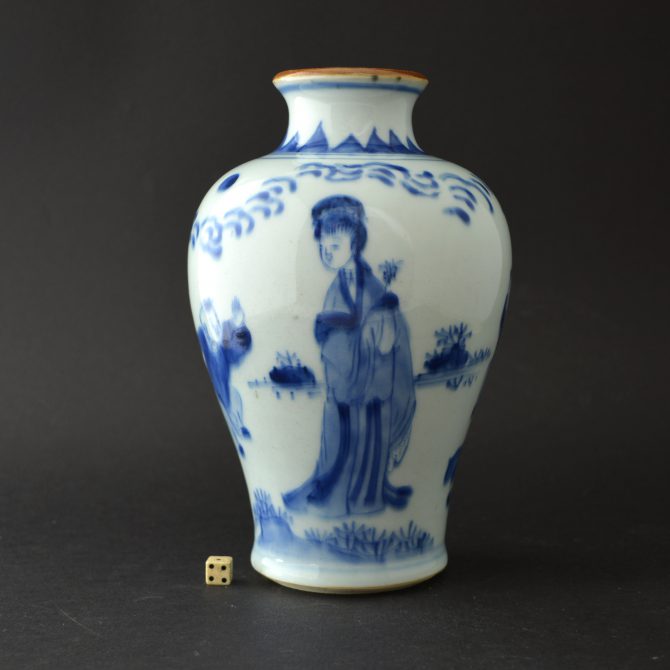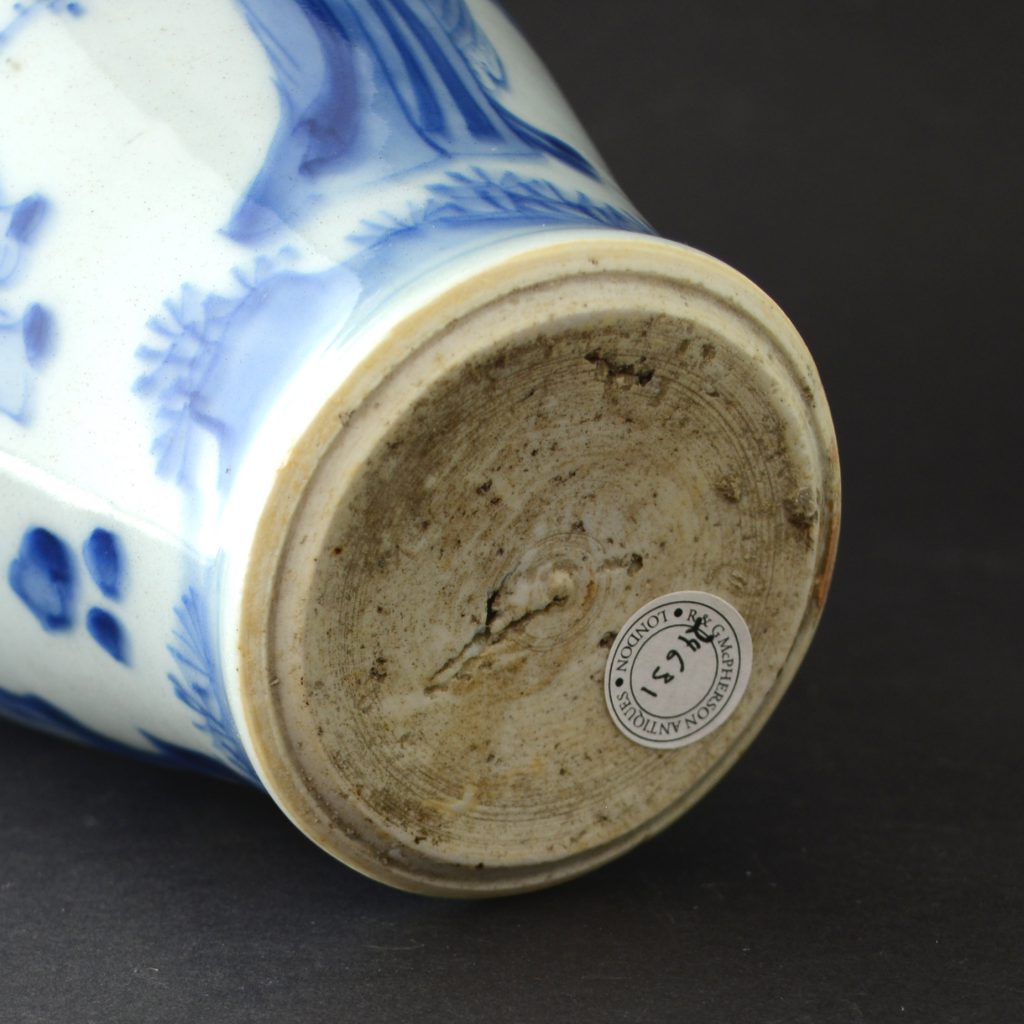
A 17th Century Chinese Blue and White Vase, Kangxi Period.
A Kangxi Blue and White porcelain vase c.1662-1674 or perhaps c.1690. Painted in cobalt blue that has slightly run with an elegant lady `Long Eliza` (Lange Lyzen) in a garden landscape with a dancing boy (referred to as a`Jumping Boy` when referring to this figure on English porcelain). The other side of this continuous scene is of a large banana plant and a scholar’s rock. The rim of this thickly potted vase is dressed with iron-oxide.
SOLD
- Condition
- In perfect condition. One side of the vase has a flattened area and very minor firing faults that are glazed over. The blue has run a little.
- Size
- Height : 18.5 cm (7 1/4 inches)
- Provenance
- N/A
- Stock number
- 24631
Information
Scholar`s Rocks :
Chinese scholars` rocks, also known as scholar stones or viewing stones, are small shaped or naturally-occurring rocks appreciated by Chinese scholars from the Song dynasty onwards, and quite frequently found in traditional Chinese gardens.
The most highly regarded stones are lingbi rocks, from Lingbi County of Anhui Province, with the finest examples dating from the Ming dynasty and Song dynasty. Taihu rocks are also prized, and are commonly used as garden stones. They influenced the development of Korean stone art and Japanese suiseki aesthetics and styles and were an important part of Confucian art. Natural stone and rock formations, with no artificial carvings, are preferred. Rocks would sometimes be carved and then thrown back into a lake so that any markings could be washed away. Scholars rocks can be any colour, and contrasting colours are not uncommon. Sometimes they feature painted patterns, which can be of any subject, either natural or abstract. The size of the stone can also be quite varied: scholars rocks can weigh either hundreds of pounds or less that one pound. Subtlety of colour, shape, and markings is also desired, as is beauty of texture and shape. Scholars stones are usually reminiscent of someone or something, or it may convey a spiritual nature that moves viewers in some way. They are usually set upon a stable surface, such as a rosewood pedestal that has been carved specifically for the stone.




